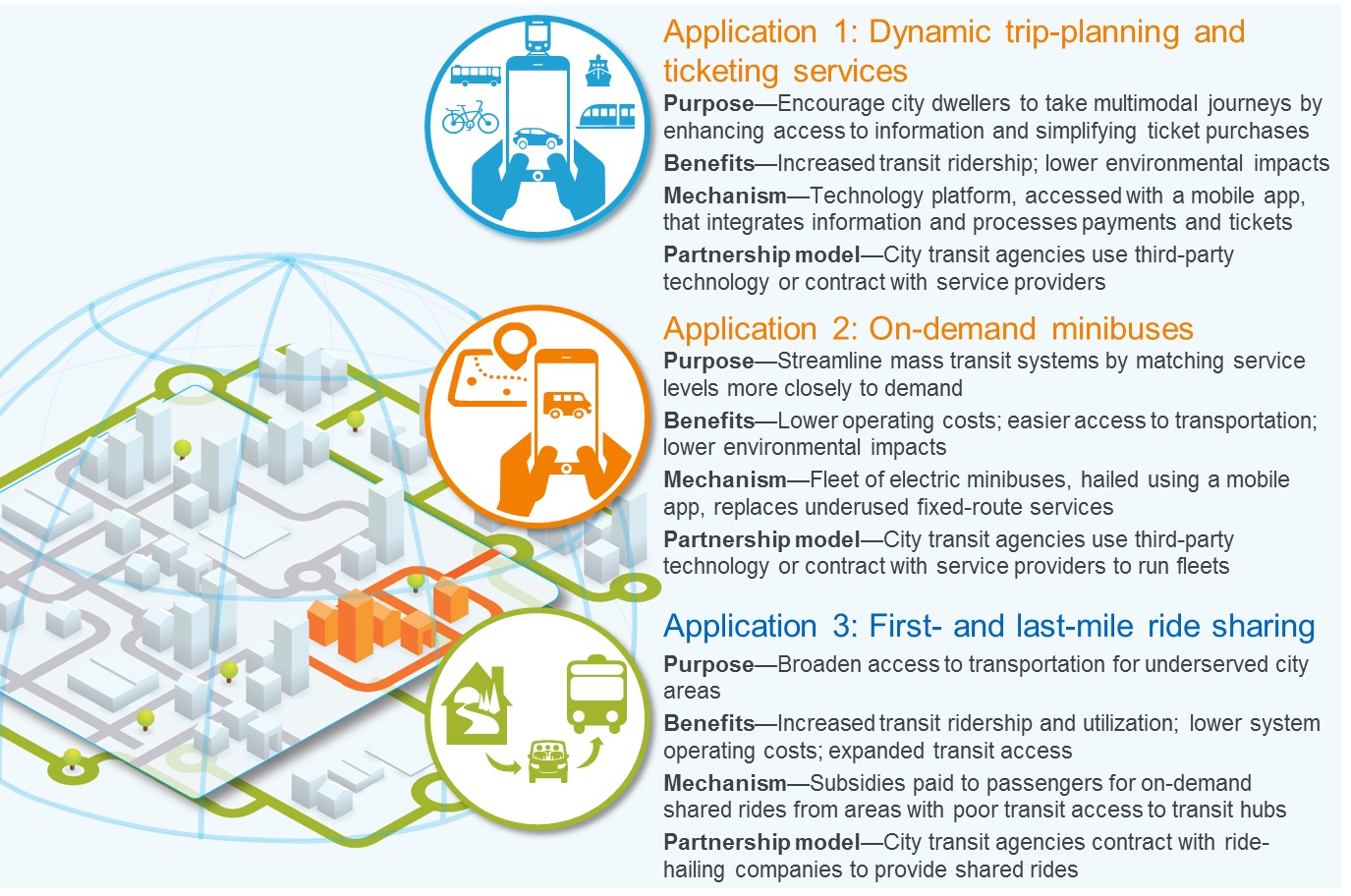
Photo: Mobility-innovations
New study reveals best ways to cut transport emissions
29 November 2017
by Nick Michell
Three new mobility services can improve the movement of urban inhabitants, according to research conducted by the Coalition for Urban Transitions, an initiative to support decision makers in ensuring that city action is linked to broader economic planning.
According to the study, integrating electric, on-demand minibuses, subsidised shared rides, and trip-planning and ticketing apps into the mass transit systems of London, Mexico City and San Francisco could make public transport more affordable, accessible and sustainable.
“Partnering with the developers of dynamic trip-planning and ticketing apps could allow cities to offer passengers an integrated platform for planning and paying for journeys, facilitating multi-modal travel and increasing public-transit ridership,” Shannon Bouton, Chief Operating Officer, McKinsey Center for Business and Environment, and one of the lead researchers, told Cities Today.
These apps could result in an increase in kilometres travelled by public transport, and a decrease in kilometres travelled by private vehicle. Consequently, greenhouse gas (GHG) emissions could be reduced by up to 500,000 metric tons. Dynamic systems in London, San Francisco, and Mexico City would lead to as much as a six percent reduction in all transport emissions, with the latter benefiting most.
As privately-operated on-demand electric minibuses reduce per-passenger labour costs and improve passenger access to public transport, integrating them with other forms of public transit could help agencies maintain or extend coverage in underserved areas while lowering the cost of service.
The research states that operating electric minibuses across London, San Francisco, and Mexico City would result in significantly lower emissions compared to standard diesel buses. Typical emissions changes per bus line were decreases of 66-99 percent for GHG emissions, about 88 percent for particulate matter, and between 95 to 99 percent for nitrogen oxides.
“Consumer experience or information services start-ups that combine information on transport options and present them in real-time are found globally,” added Bouton. “Transit information start-ups in particular are widespread, possibly due to open data access provided by public transit agencies. However, of the more than 70 cities already partnering with new private mobility services to address the challenges public transit systems are facing, 60 percent are in North America and Europe, and are present in only four cities in the Global South.”











